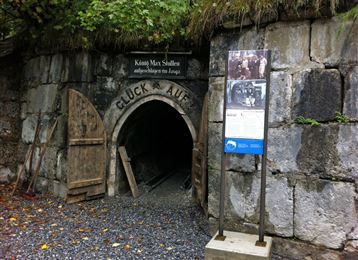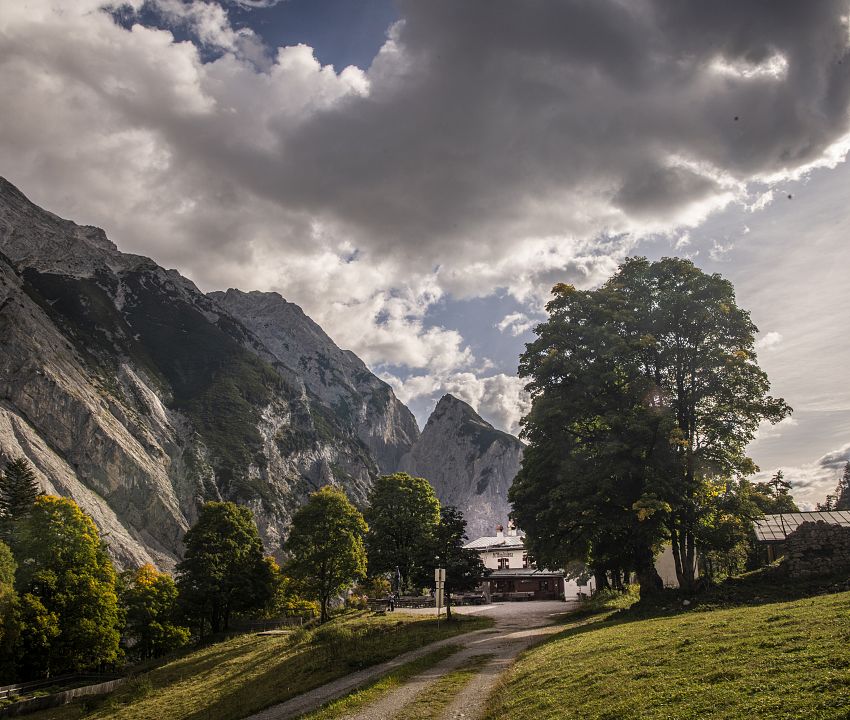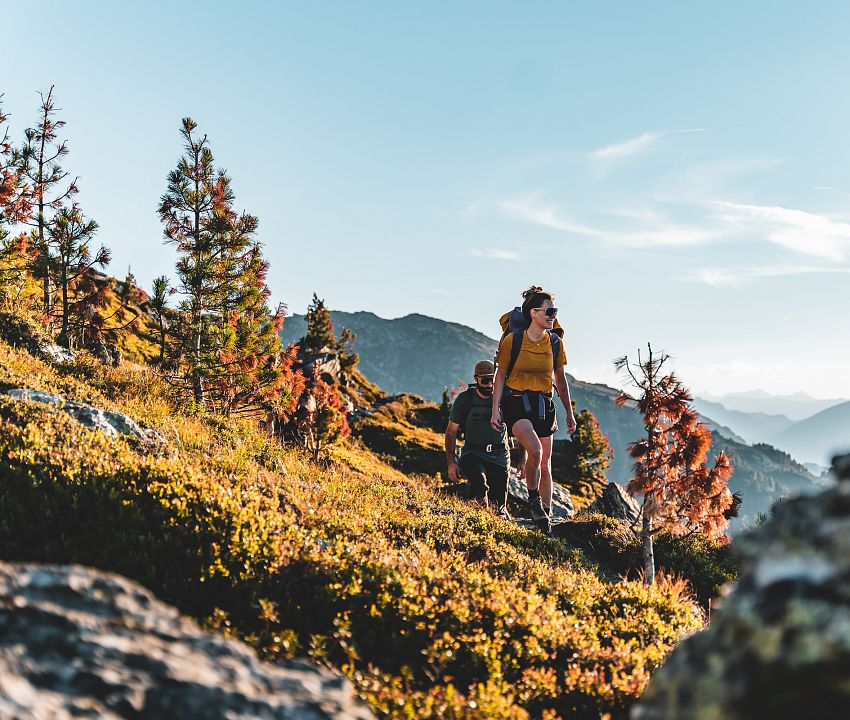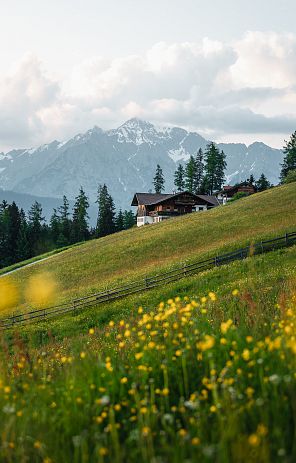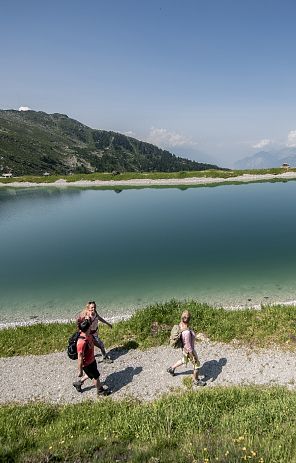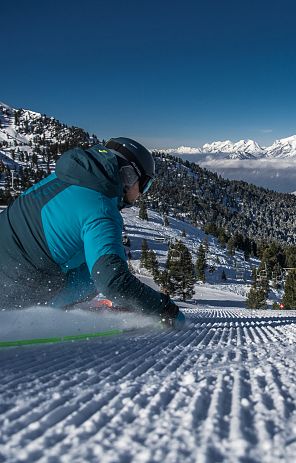Historical. Brine hiking trail
You will find numerous traces of salt mining in the Halltal valley. Salt was mined underground here for over 700 years: From the highest tunnel, the Wasserberg at 1635 meters above sea level, miners fed water into the salty mountain as early as the end of the 13th century: the salt-dissolving effect of the water was used there. Once the maximum salt saturation in the mountain had been reached, "Wasserer" led the salt-water mixture, the brine, through a wooden pipe nine kilometers downhill to the brewing pans in the Hall salt works. There, "Pfannhauser" heated the brine in large pans, the water evaporated and the salt crystallized. Now hike along the traces of salt mining from Maximiliansbrünnl to the manor house, where you can take a look into one of the eight main tunnels that were dug into the mountain between 1272 and 1808.
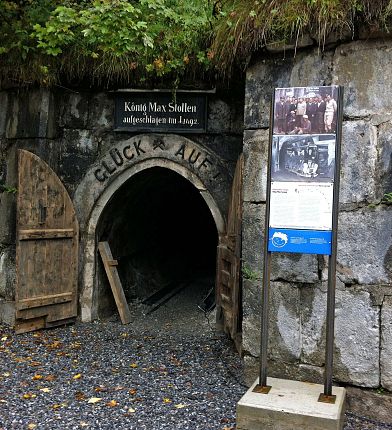
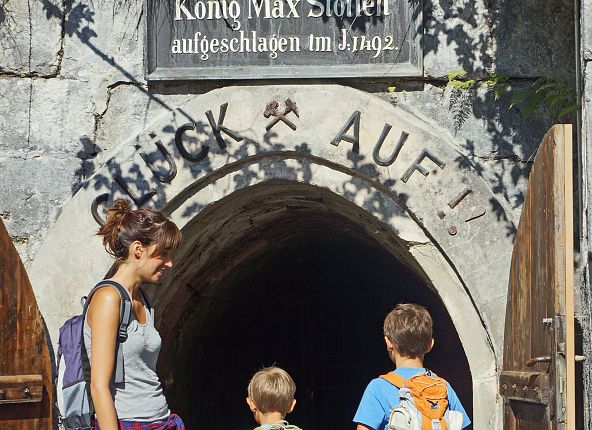
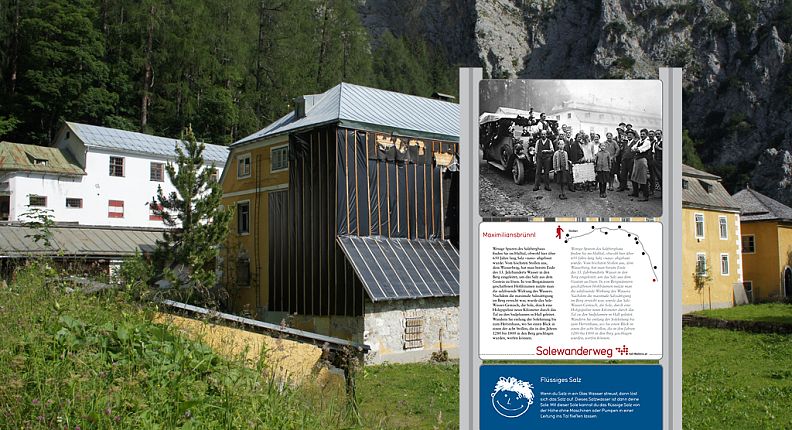
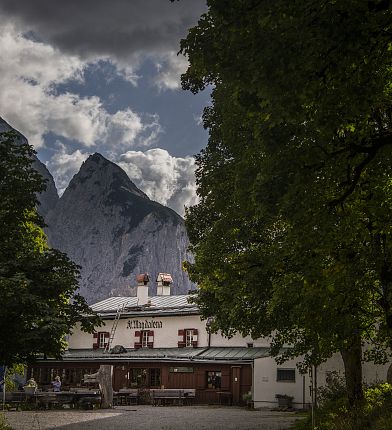
Tour description
- Difference in altitude: 750m ascent, 739m descent
- Difficulty level: easy
- Walking time: approx. 4 hours
- Kilometers: 10.7 kilometers
Part of the route that the salt took from the mountain to the valley in long wooden pipes can be hiked on the historic brine hiking trail. The trail starts at the entrance to the Halltal valley (free parking available). Exciting information boards await you at prominent points along the way, providing historical background information and fantastic visual documentation of salt mining in past centuries. There is also plenty for children: a puzzle trail shortens the ascent to the König-Max-Stollen. Along the way, you will pass the Berger Chapel, the Ladhütten huts, the water intake and the steep Bettelwurfeck, all of which have almost forgotten stories to tell.
After the Alpengasthof St. Magdalena, whose excellent cuisine is perfect for refreshments, things get particularly exciting: not far from the famous "Herrenhaus", where the high salt officials had their comfortable quarters in the days of salt mining, you can take a look into one of the eight main tunnels: The "König-Max - Stollen", named after the famous Emperor Maximilian. This tunnel was opened in 1492 - just at the time when Christopher Columbus discovered America (Emperor Maximilian was still king at the time, hence the name). A fascinating look underground!
Refreshment stop:
Alpengasthaus St. Magdalena
Halltal 23, 6067 Absam
Innkeeper: Harald Biechl
Telephone: +43(0)650/5703391
Important note: The historic brine hiking trail is accessible from mid-May to the end of October in good weather.
Stations "Historical brine hiking trail with a view of the salt mountain"
- 1 Maximilian brünnl
- 2 Mountain chapel
- 3 The Ladhütten
- 4 Water catchment
- 5 Bettelwurfbrünnl
- 6 Bettelwurfeck with Buchenwaldele
- 7 Sun bridge
- 8 St. Magdalena
- 9 Ferdinand tunnel
- 10 manor houses
- 11 King Max gallery (1492)
The discovery of the salt mountain in Halltal
According to an old tradition, the famous salt mine in Halltal, which operated until 1967, was discovered in a strange way in 1275 by the knight Nikolaus von Rohrbach. The knight got into conversation with his hunters during a rest in the Halltal valley. They told him that red deer, especially stags, had been observed licking eagerly at the rocks for a long time. There must be something special about this rock, as the deer in Halltal have always thrived, as if they were given salt to lick.
The knight took notice, repeatedly observed the game on the rock, went there himself and touched the rock with his tongue, which he immediately recognized as being rich in salt. He shrewdly concluded that there must be an even better salt stone deep inside the mountain than on the surface.
This assumption was confirmed and the Hall salt mine was opened soon afterwards. From this point onwards, the Haller Salzberg provided the precious spice for many centuries, making the region one of the richest of its time.
